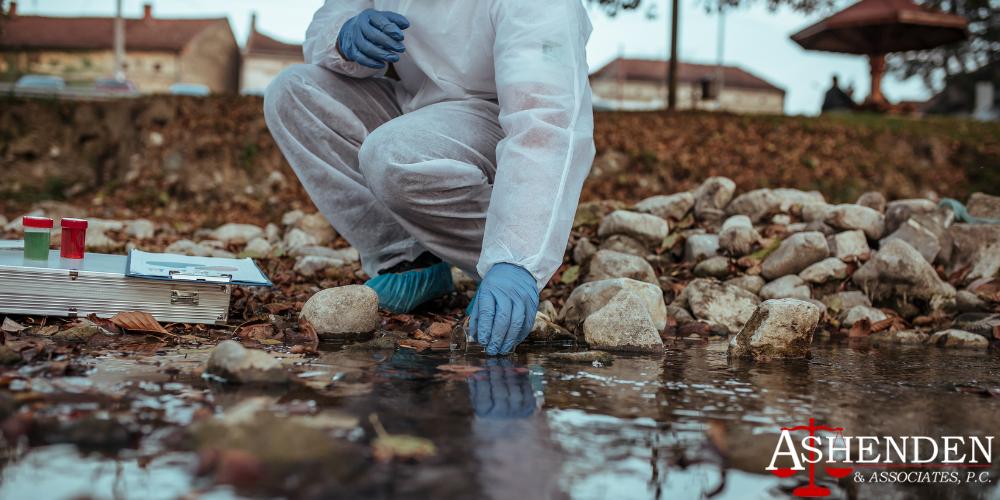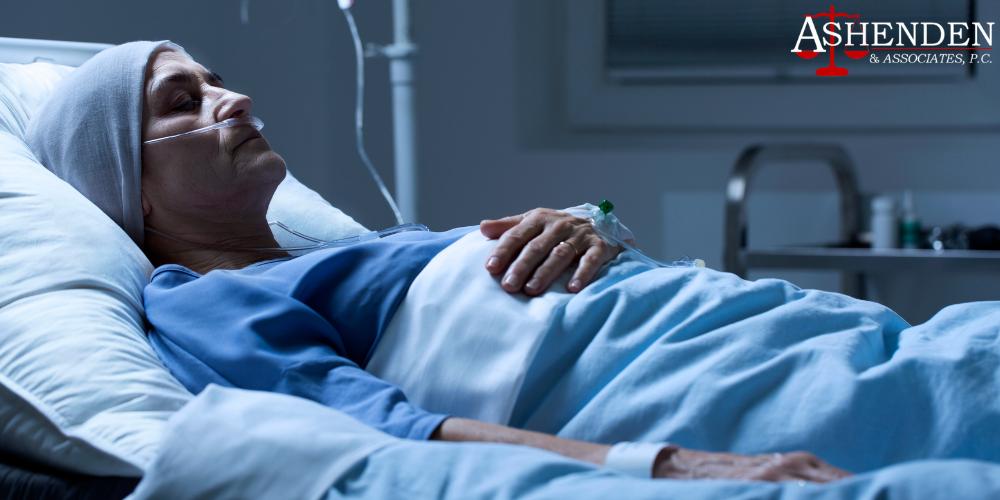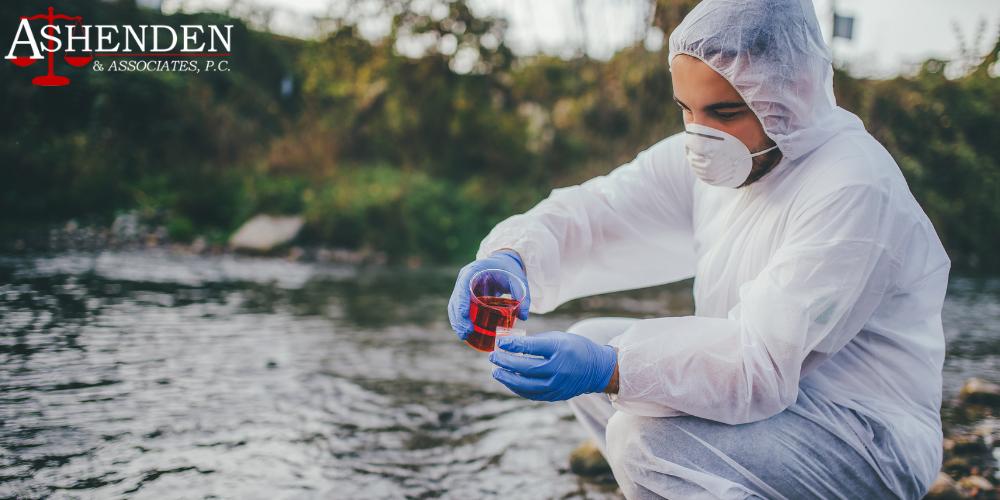We Go The Extra Distance For Our Clients
Class Action and Product Liability Practice Areas
Camp LeJeune Water Contamination Lawsuit
For more than 30 years, the water supply at Marine Corps Base Camp Lejeune was contaminated with toxic substances. Since then, many former residents at Camp Lejeune and Marine Corps veterans, as well as their family members, have suffered from tragic adverse health effects due to long-term exposure to the contaminated water. Fortunately, after many years, congress passed the Camp Lejeune Justice Act to cover losses sustained by people exposed to Camp Lejeune contaminated drinking water.
If you and your loved ones have suffered major adverse health effects due to the contaminated water at Camp Lejeune, you have grounds to file a Camp Lejeune water contamination lawsuit. Our experienced Sandy Springs personal injury attorneys at Ashenden & Associates will work endlessly to make sure that you will receive the legal advice and support you deserve to recover damages you have suffered as a result of Camp Lejeune contaminated drinking water. Call our law firm at 770-394-8909 today to schedule a free consultation.
History of Camp Lejeune Marine Corps Base and Its Contaminated Drinking Water
Camp Lejeune Marine Corps Base is a U.S. military training facility in Jacksonville, North Carolina. The base was built in 1941 and has a population of approximately 170,000 active duty members, dependents, civilians, retirees, and employees. Below, we provide a brief synopsis of Camp Lejeune and its contaminated water supply.
We now know that the three main water treatment plants that supplied contaminated water to Camp Lejeune were Tarawa Terrace, Hadnot Point, and Holcomb Boulevard. In 1953, One Hour Dry Cleaner opened right across the street from Tarawa Terrace. This business allowed toxic chemicals – used for dry cleaning purposes – to contaminate the drinking water within the Tarawa Terrace treatment plant.
Experts estimate that 20,000 to 30,000 gallons of oil from underground storage tanks at Hadnot Point Fuel Farm leaked into the ground, further contributing to the water contamination at Camp Lejeune.
In 1981, the first reports of possible contaminated water at Camp Lejeune were sent to U.S. Marine officials from the U.S. Army Environmental Hygiene Agency. More specifically, the lab report listed chlorinated hydrocarbons (solvents) as a contaminate after originally testing the water for trihalomethanes as directed by the Environmental Protection Agency (EPA) a year prior.
The U.S. Marine Corps hired a private company – Grainger Laboratories – to further investigate the water contamination. The lab found probable human carcinogens such as benzene, perchloroethylene (PEC), and trichloroethylene (TCE) in the water at the Hadnot Point Treatment Plant. Employees at Grainger Laboratories warned multiple Camp Lejeune officials about the contaminated water, but the officials were generally unconcerned and allowed the contaminated water supply from the treatment plants to continue.
The EPA contracted a different company to test for water contamination at Camp Lejeune. This time, the chemists focused on testing individual wells at Tarawa Terrace treatment plant and Hadnot Point treatment plant. The chemists discovered concentrations of toxic chemicals that were between 240 to 3,400 times higher than what’s deemed as safe for consumption. After this discovery, one contaminated water well was shut down. The Marines finally notified the state of North Carolina about the Camp Lejeune water contamination.
All other water wells that contributed to the toxic water contamination at the Camp Lejeune Base were shut down.
The EPA declares that the Camp Lejeune Base is a “Superfund Site.” Superfund Sites are basically heavily polluted areas that require long-term cleanup of the toxic substances. Additionally, Superfund Sites fall under the Comprehensive Environmental Response, Compensation, and Liability Act (CERCLA) of 1980.
President George Bush signs a bill mandating further investigation of the Camp Lejeune water contamination.
The Camp Lejeune Families Act is a federal law that was passed in 2012, and it provides health care benefits to military personnel and family members who have suffered devastating health complications due to the contaminated water supply.
Camp Lejeune veterans and residents filed more than 800 Camp Lejeune water contamination lawsuits via the Federal Tort Claims Act (FTCA). Because the North Carolina statute of repose was 10 years, these Camp Lejeune claims were dismissed.
Hundreds of Camp Lejeune families appeal the aforementioned decision, but all appeals were denied, leaving ill victims with no financial compensation.
President Joe Biden enacted the Camp Lejeune Justice Act into federal law as part of the PACT Act in August of 2022. The PACT Act is also known as the “Sergeant First Class Heath Robinson Honoring our Promise to Address Comprehensive Toxics Act of 2022.” The PACT Act provided healthcare and disability compensation for veterans who were exposed to toxic burn pits while serving in the military.

What Chemicals Were in the Camp Lejeune Water?
Multiple types of volatile organic compounds and other toxic substances were the source of the Camp Lejeune contamination. Below, we break down the details of a few of these toxic chemicals, including what they are and how they can lead to significant health problems.
Mercury
In 2012, further investigation of Camp Lejeune water contamination revealed that a whopping 12 pounds of mercury was found in the Hadnot Point treatment plant. Experts believe that elemental mercury (AKA liquid mercury) may have come from water pressure meters that were removed from the water plant in the 1980s.
Mercury poisoning is very dangerous, and can lead to the following symptoms:
- Tingling, numbness, or pins and needles sensations in the hands and feet
- Loss of peripheral vision
- Muscle weakness
- Nausea and/or vomiting
- Metallic taste in the mouth
- Speech and hearing impairment
- Difficulty walking and moving in general
- Lack of coordination
- High blood pressure
- Mental health problems such as anxiety and/or depression
- Memory loss
- Shaking
Toluene
Toluene is a clear and colorless liquid which can become a toxic vapor when exposed to room temperature air. The vapor tends to have a sweet-smelling odor. People can suffer toluene exposure by swallowing it, getting it on their skin, or breathing in the vapor. Toluene is usually mixed into paint pigments and solvents along with other chemicals.
Exposure to this toxic substance carries many health risks, such as increased risks of esophageal cancer, liver cancer, renal toxicity, lung cancer, bladder cancer, and breast cancer.
Benzene
Camp Lejeune residents and veterans were also exposed to benzene in the water for many years. In its liquid form at room temperature, it can appear clear or slightly yellow. It also smells sweet, similarly to toluene. Benzene is one of the main chemicals found in gasoline, but it’s also used to make plastics, rubber lubricants, dyes, detergents, resins, synthetic fibers, pesticides, and more.
Medical professionals have linked long-term benzene exposure to various types of leukemia, multiple myeloma, and non-Hodgkin’s lymphoma.
Vinyl Chloride
Vinyl chloride is a type of flammable gas that has no color. This type of chemical is often used in the creation of vehicle upholstery, plastic kitchenware, wire coatings, and PVC pipes.
Drinking an unsafe amount of vinyl chloride in water can lead to a variety of health problems, such as liver damage or liver cancer and neurological problems.

Perchloroethylene (PCE)
Perchloroethylene (PCE) is one of many volatile organic compounds that contributed to the water contamination at Camp Lejeune. The concentrations of PCE were one of the highest out of all the other chemicals found in the water, and it has been linked to the majority of the victims’ health complications.
Just for reference, the EPA estimates that levels of PCE in water exceeding 5 ug/L can lead to significant health complications. The highest documented levels of PCE in water from the Tarawa Terrace treatment plant was 215 ug/L. This is approximately 43 times the maximum safe level according to the EPA.
PCE is most commonly used for dry cleaning and metal degreasing. People can become poisoned from PCE through ingestion, inhalation, or skin contact. Long-term PCE exposure can lead to life-threatening health problems such as central nervous system depression, liver damage or cancer, kidney damage or cancer, and so much more.
Trichloroethylene (TCE)
Trichloroethylene (TCE) is another volatile organic compound that was found in large amounts in the Camp Lejeune water supply. It’s mostly used for metal degreasing, but it can also be found in products like wood finishes, paint removers, stain removers, and adhesives.
According to the EPA, the maximum safe level of TCE in drinking water is 5 ug/L. The highest level of TCE documented at the Hadnot Point treatment plant was 1,400 5 ug/L. This is approximately 280 times the maximum safe level according to the EPA.
Not only can long-term exposure to TCE lead to a variety of cancers, but it can also lead to a variety of birth defects (most notably: congenital heart defects) due to the chemical’s ability to flow into a pregnant woman’s placenta.

Health Complications From Camp Lejeune Contaminated Water
Atlanta, Georgia’s Agency for Toxic Substances and Disease Registry (along with the National Research Council) claimed that long-term exposure to contaminated water greatly increases the risk of childhood cancers and a host of other health complications. Former residents at Camp Lejeune have suffered from a variety of cancers, including:
- Breast cancer
- Liver cancer
- Esophageal cancer
- Kidney cancer
- Bladder cancer
- Lung cancer
- Colorectal cancer
- Ovarian cancer
- Cervical cancer
- Prostate cancer
- Multiple myeloma
- Leukemia
- Non-Hodgkin’s lymphoma
- Childhood cancers
Non-cancer health conditions that can be linked back to Camp Lejeune water contamination include:
- Aplastic anemia
- Parkinson’s Disease
- Myelodysplastic syndrome
- Miscarriages and/or infertility
- Fatty liver disease
- Hepatic steatosis
- Cardiac conditions
- Amyotrophic Lateral Sclerosis (ALS)
- Scleroderma
- Kidney damage/failure
- Neurological and mental issues
A variety of birth defects (congenital heart defects, spina bifida, cleft lip/palate, anencephaly, etc.) have also been linked back to Camp Lejeune water contamination. In fact, children born to mothers who drank contaminated water at Camp Lejeune were much more likely to suffer birth defects compared to other children according to a 2003 study conducted by the CDC.
Can I File a Camp Lejeune Contaminated Water Lawsuit?
Marine Corps veterans and their loved ones may have grounds to file a Camp Lejeune water contamination lawsuit if:
- You were based at or served at Marine Corps Base Camp Lejeune or Air Station New River for a total of at least 30 days from 1953 through 1987;
- You were a family member of a military member stationed at Camp Lejeune or Air Station New River for at least 30 days between the years of 1953 to 1987;
- You did not receive a dishonorable discharge; and
- You have been diagnosed with one of the aforementioned medical conditions.
Our lawyers have extensive experience and can help you file a Camp Lejeune prostate cancer lawsuit in Atlanta or Sandy Springs, a Camp Lejeune birth injury lawsuit, or a lawsuit for any of the above illnesses or injuries.
Damages for Camp Lejeune Water Contamination
Marine Corps veterans and loved ones may be entitled to compensation for illness and injury due to contaminated drinking water at Camp Lejeune and Marine Corps Air Station New River. Your compensation could include the following:
- Medical bills;
- Lost wages and lost income;
- Rehabilitation;
- Emotional pain and suffering;
- Loss of enjoyment of life;
- Disability;
- Loss of future earning capacity;
- Pain and suffering; and
- Scarring and disfigurement.
How Will Camp Lejeune Settlement Amounts Be Determined?
Camp Lejeune settlement amounts will depend on the nature and severity of the illness or medical condition suffered by victims, as well as the amount of time served at Camp Lejeune. In all likelihood, victims who endure tragic conditions such as cancer, leukemia, or Parkinson’s disease will be offered larger settlements than people who were diagnosed with less serious medical problems.
Because so many people have been affected by Camp Lejeune’s contaminated drinking water, federal government lawyers will most likely establish a grid system to determine settlement amounts. The grid will account for the severity of illnesses arising from Camp Lejeune’s contaminated drinking water, whether there were hospitalizations or surgery listed in a victim’s medical records, the amount of medical bills, and how long victims have been disabled from work.

Call a Sandy Springs Camp Lejeune Lawyer at Ashenden & Associates Today
If you or a loved one has suffered catastrophic illness due to Camp Lejeune water contamination, you may have grounds to recover financial compensation through Camp Lejeune litigation. The Camp Lejeune attorneys at Ashenden & Associates have what it takes to recover maximum compensation for the military members and families affected. We know how physically, emotionally, and financially traumatic a Camp Lejeune injury case can be. Sandy Springs Camp Lejeune lawyers in our office will fight for your rights during such a difficult time. Call us at 770-394-8909 today to schedule a consultation with one of our legal professionals.

